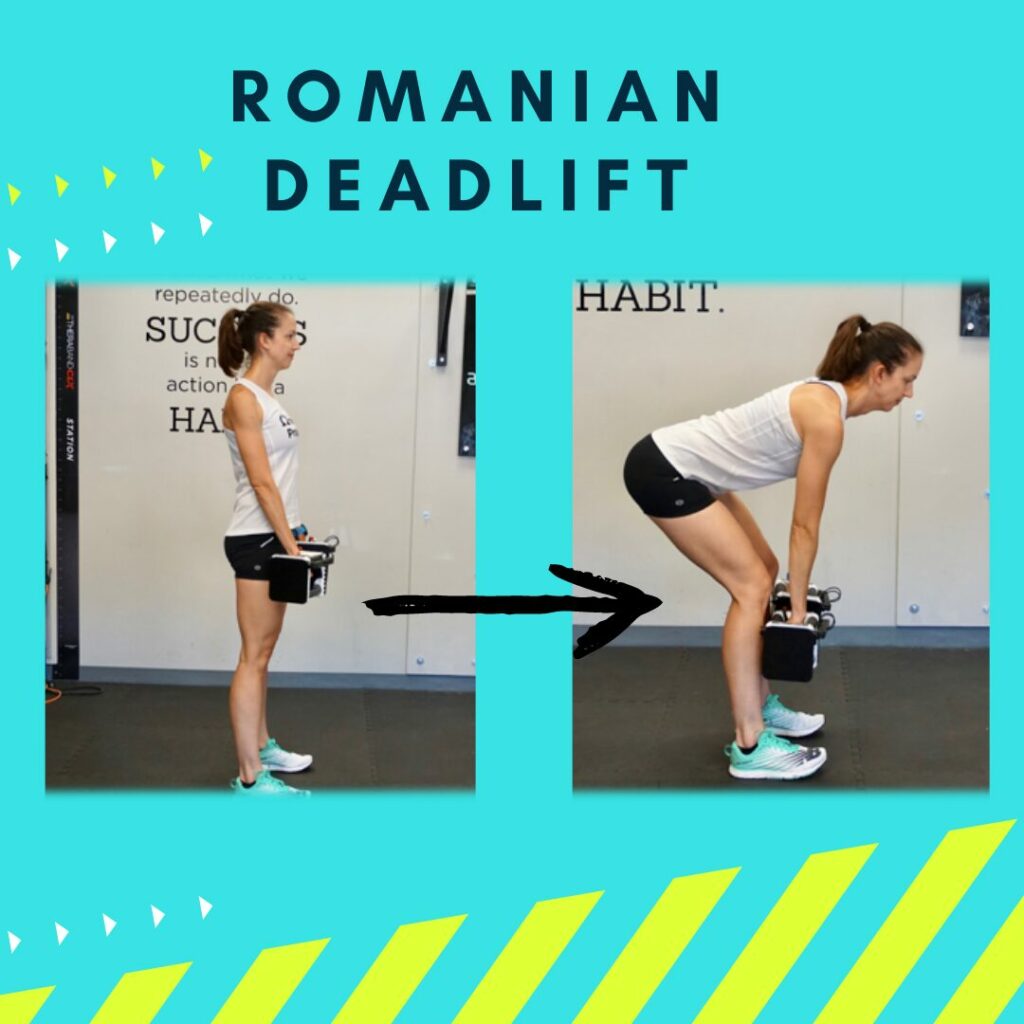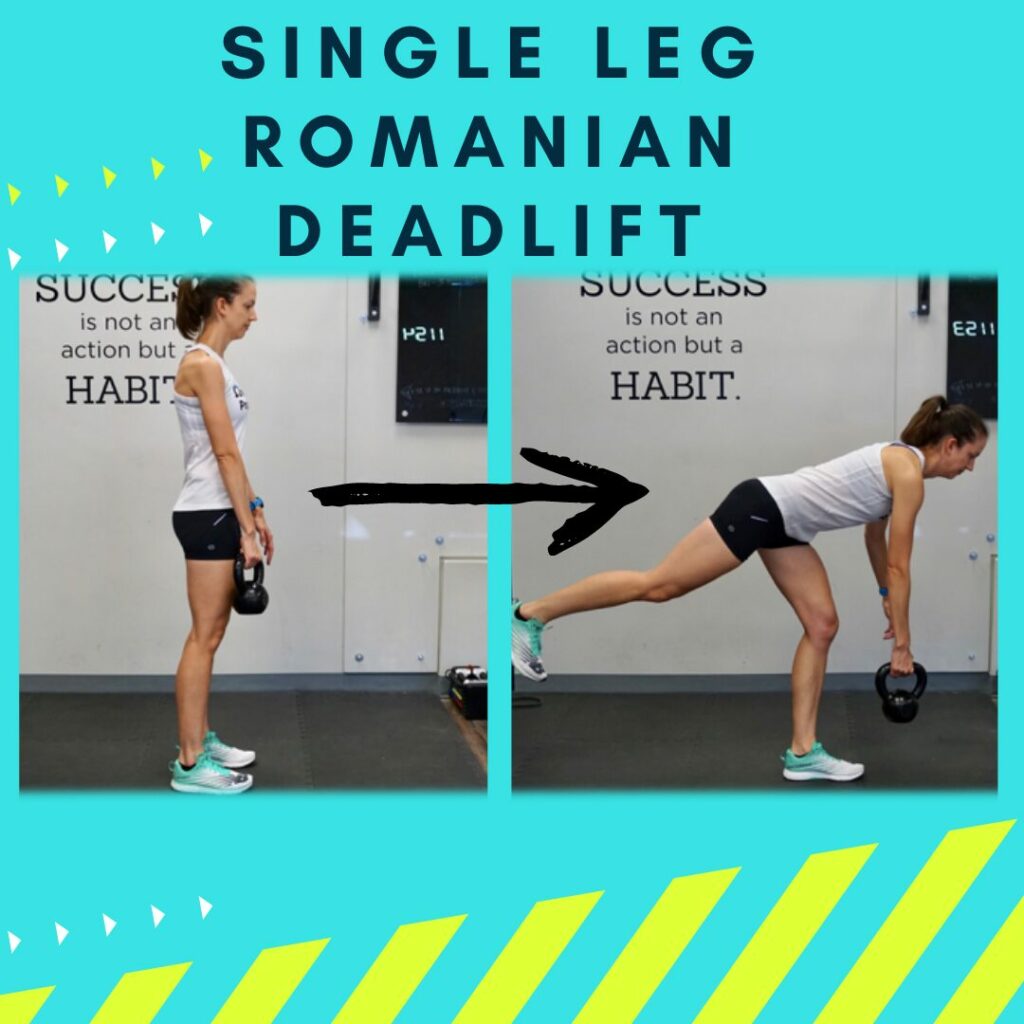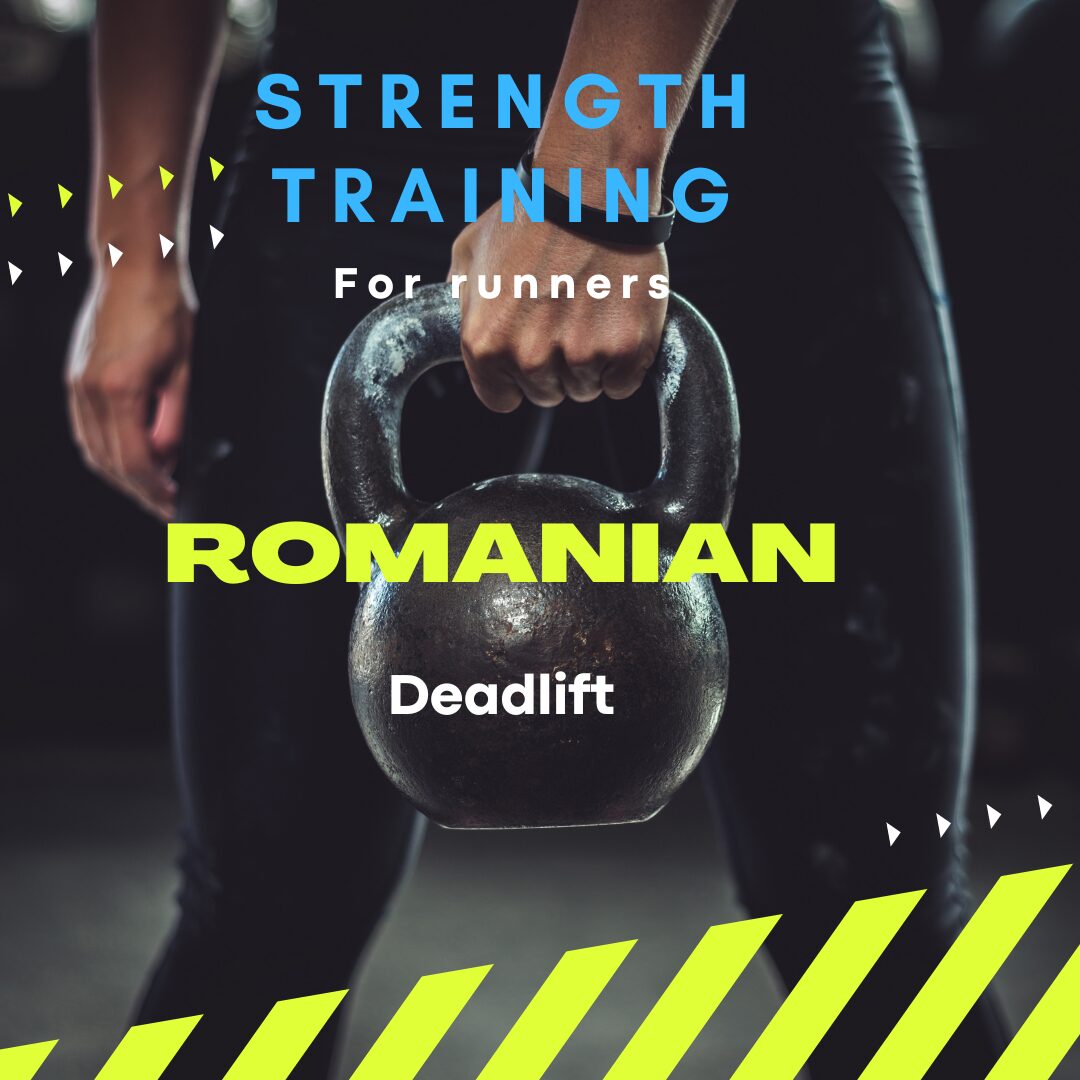A few weeks ago we touched on the importance of strength training for athletes.
If you missed it, a quick refresher on the benefits of strength training:
- Improved mobility
- Injury prevention
- Improved running performance
- Improved bone health (decreased risk of stress fractures, osteoporosis)
- Healthy Aging
As we continue through the cold winter months, many of us are focusing on our base training or have just begun to ramp up training for an early spring race. This is a great time to incorporate some strengthening into your training routine.
So, where to begin?
We are going to spend the next few weeks highlighting some of our favorite strength training activities for runners. This week we will review the Romanian Deadlift (RDL).
The Romanian deadlift is different from a traditional deadlift in that you are starting in an upright position with the weight in your hands rather than starting with the weight on the floor. This is an exercise that primarily works the gluteal and hamstring muscles and also helps to promote strength and stability of the core and back.
Proper Form with RDL:
- Start in an upright position, with feet hip width apart and holding a weight or bar as able.
- Keep your weight evenly distributed throughout your foot (not too much weight towards the heels or toes).
- Keep eyes on the ground just ahead of you throughout the movement.
- Start moving by hinging at the hips, while keeping the back straight.
- Keep knees slightly bent as you slide weight or bar down along your shin.
- Lower weight as low as you can towards the ground without losing form
- Squeeze your glutes and push your hips forward, extending the hips and knees as you stand back upright.

Back to the Basics: The Hip Hinge
One of the most important parts of the Romanian deadlift is performing a proper hip hinge throughout the movement. This helps to ensure proper recruitment of the glutes and hamstrings throughout the exercise, while also decreasing strain on the low back.
If you are having trouble with the full RDL movement, below are a few ways to practice the proper hip hinge to promote good form with the RDL and Single leg RDL.
In the video below, the first movement prep activity is a single leg RDL with the hind leg elevated on the wall. The goal with this movement is to focus on maintaining a neutral spine as you push the hips and buttock back towards the wall. This activity also encourages keeping a neutral hip and pelvic position and avoiding rotation, which is a common mistake we see with the single legged RDL.
The second movement prep activity utilizes a pole (e.g. a PVC pipe or broom) behind the back to encourage proper position of the spine. The pole should remain in contact with the back of your head and your sacrum. As you hinge forwards, you must maintain a neutral spine position in order to avoid losing contact between the pole and the sacrum.
Level Up: The Single Leg RDL
Once you have mastered the hip hinge and the standard RDL with some resistance, a very challenging progression is the single leg RDL. This activity more closely mimics the coordination, balance and strength needed for runners.
To perform a single leg RDL:
- Stand on one leg with knee relaxed/slightly bent
- Start by lifting the opposite heel towards the ceiling as you hinge at the hips and let your trunk come forward.
- Maintain flat back, thinking about keeping your trunk and leg all in a straight line.
- Slowly lower your opposite hand or weight towards the floor while keeping a flat back until you feel like you are unable to go any further without losing balance or bending the back.
- Slowly return back to starting position.

Troubleshooting
So now you’ve tried the RDL and maybe even the single leg RDL, but what do you do if you are feeling it in places that you know you shouldn’t be?
Neck pain? Make sure that your neck stays in a neutral position. Try to keep your eyes on the ground just ahead of you. This will prevent you from tilting the head too far back or too far forwards, which can place unnecessary strain on the neck.
Back pain? Maybe you’re flexing the spine too much (go back and review that hip hinge), or maybe you are keeping the bar too far out in front of your shins and body. Either of these two scenarios can place additional strain on the mid and low backs.
Pro Tip: If trying to make these adjustments doesn’t work, consider trying to minimize range of motion (this is not a game of how low can you go). Place a block or stool in front of you to limit how far down you can go with the weight to limit the stress on the back.
Hamstring pain? Make sure that your knees are relaxed or slightly bent; avoid keeping them locked out fully to prevent excessive strain on the hamstrings.
Pro Tip: this is a great exercise to stress the hamstrings eccentrically, which is important after a hamstring strain. Sometimes slight hamstring soreness with this activity is OK, but always speak to your PT about whether or not your pain is appropriate.
Knee Pain? Keep an eye on the position of that knee. It should remain in line with your toes. If the knee starts to collapse inwards this can cause some pain at the hip or knee.
Pro Tip: If you are having trouble controlling that knee with the SL RDL especially, go back to the double leg RDL and add a band around the knees to encourage better gluteal recruitment.
While these are some of the most common issues that people have with performing the RDL, there are certainly others. If you are having trouble or cannot perform the movement without pain, reach out to a local movement specialist.
Happy Strength Training!

